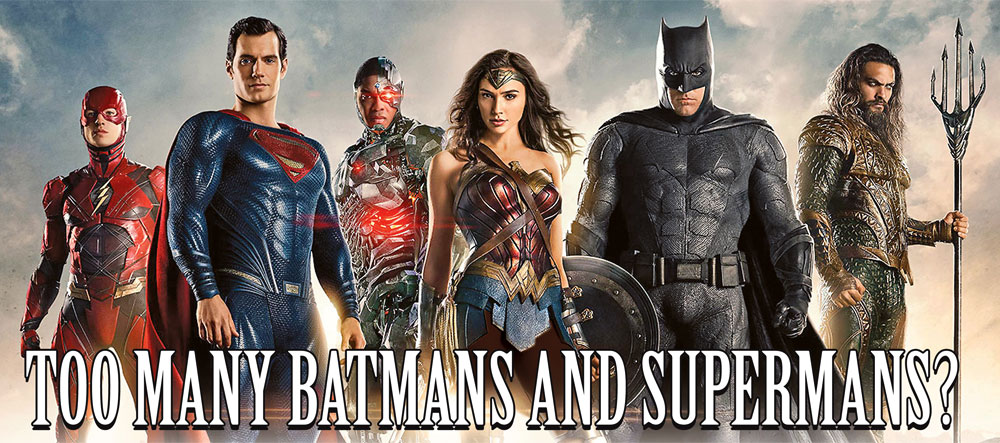Social Media to you is?
- 27 May - 02 Jun, 2023

DC used to feature one version of a superhero at a time onscreen.
In a simpler time, we knew exactly who our heroes were. There was just one Clark Kent who ducked into phone booths and emerged as Superman, one Bruce Wayne who slid down the Batpole to get suited up as Batman. But times are no longer simple. As the DC comic-book characters become more central to the ambitions of Warner Brothers, they appear in more and more TV shows and movie franchises. Where it once took decades to arrive at a single film in which Batman and Superman finally threw down, now there are numerous fictional worlds that exist side by side – interesting occasionally, or not at all – where these champions reside and do battle, and even multiple versions of the same characters across several properties. It can all be very confusing. Is there a way to solve this crisis on infinite Earths? Probably not, but this visual guide to the DC media universe will help explain just how complicated it has become.
The Lego Batman Movie imagines a colourful, kid-friendly reality where heroes and villains alike are made from plastic building blocks. Meanwhile, on TV, Gotham is set in a gloomy era before Bruce Wayne became Batman and the members of his future rogues’ gallery had grown into their fully realised, homicidal selves. Needless to say, these worlds never intersect with each other.
This is the hub of the DC movie system, where new characters are introduced and occasionally reunited to fight each other. But wildly differing tones and mediocre reviews – save for the unqualified hit Wonder Woman – have resulted in a shaky foundation on which to build a film franchise, and the deflated reception for Justice League last month didn’t help.
An ever-growing framework of inter-connected shows on the CW network, start with Arrow and all share the executive producer Greg Berlanti. Two new online shows, Constantine and Freedom Fighters: the Ray, will also take place in this universe, though a coming CW network series, Black Lightning, based on that DC hero, will not (for now). Legends of Tomorrow recently revealed that its universe contains Themyscira, the secret island where Wonder Woman was born and raised. The Wonder Woman of the movies, you ask? No one’s answering.
When all this contemplation of shared narrative universes becomes too taxing on the old gray matter, it’s nice to think about past efforts like the Adam West Batman series of the 1960s or the Christopher Reeve Superman movies of the 70s and 80s. They told their stories in two hours or less, while inadvertently whetting our appetites for more complicated worlds to come.
These in-the-works projects will focus on characters seen in DC Extended Universe films but may not be a part of the official franchise continuity. A Joker movie, possibly produced by Martin Scorsese, wouldn’t star Jared Leto, the Joker in Suicide Squad, while the Batman movie, intended for Ben Affleck, may or may not star Mr Affleck at this rate.
Though not strictly speaking a part of the current DC motion-picture universe, Christopher Nolan’s Batman films – with their sombre mood and multi-billion-dollar box office – had an enormous influence on the contemporary vogue for caped crusaders. The Dark Knight series told the story of Bruce Wayne’s rise, fall and redemption, and then had the good sense to end.
Based on the adventures of Superman’s cousin, Supergirl – which started on the American television network CBS, then moved to the CW network – takes place in its own distinct reality and is allowed to cross over to the Arrowverse only occasionally under unique conditions. To make life interesting, this continuity has its own Superman, who isn’t the Superman of the DCEU movies.
Source: The New York Times
COMMENTS